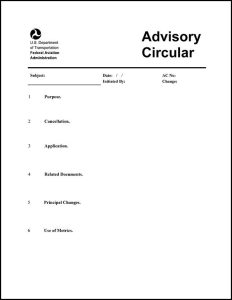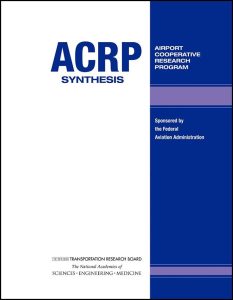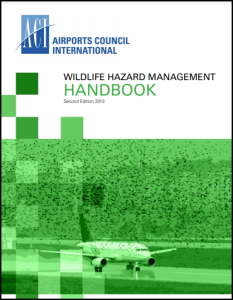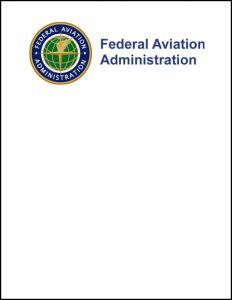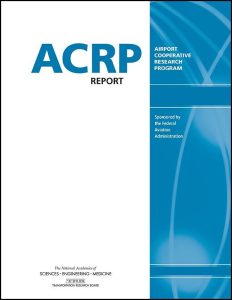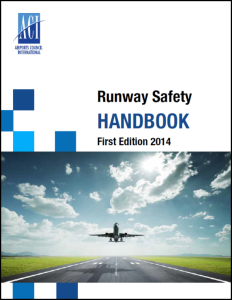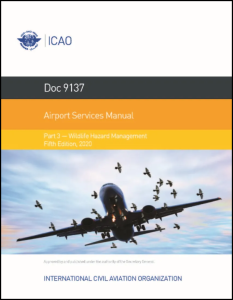To narrow the library of airside resources, use the filter boxes or airport map below or search box above.
Click an item below to expand.
Resources Matching Your Search
2021
This resource is a webpage that provides information on the Electronic Code of Federal Regulations (e-CFR) Title 14, Chapter I, Subchapter G, Part 139, which contains guidance on certification, airport certification manual, and operations.
2013
This advisory circular (AC) explains the importance of reporting collisions between aircraft and wildlife, more commonly referred to as wildlife strikes. It also explains recent improvements in the Federal Aviation Administration's (FAA's) Bird/Other Wildlife Strike Reporting system, how to report a wildlife strike, what happens to the wildlife strike report data, how to access the FAA National Wildlife Strike Database (NWSD), and the FAA's Feather Identification program.
2020
This advisory circular (AC) provides guidance on certain land uses that have the potential to attract hazardous wildlife on or near public-use airports. It also discusses airport development projects (including airport construction, expansion, and renovation) affecting aircraft movement near hazardous wildlife attractants. Appendix 1 provides definitions of terms used in this AC.
2018
For certificated airports, this advisory circular (AC) defines the minimum acceptable standards for the conduct and preparation of wildlife hazard site visits, assessments, and management plans. This AC provides guidelines that discuss whether a site visit can be conducted or whether an assessment must be conducted under Part 139. In the case of airports that are not Part 139 certificated, this AC provides guidelines as to when a site visit or assessment is recommended. The AC further defines and explains continual monitoring programs. This AC also provides checklists to help people evaluate site visits, assessments, and plans.
2013
ACRP Synthesis 39 provides direct wildlife population control techniques for reducing wildlife collisions with aircraft. In addition, the report summarizes the ecological foundation of wildlife population control and management.
2014
ACRP Synthesis 52 presents information on habitat management to deter wildlife at airports and manage risk to aviation. It is the third of three related syntheses and completes the series on wildlife risk management at airports. ACRP Synthesis 52 builds on previous ACRP documents, including ACRP Synthesis 23, ACRP Report 32, and ACRP Synthesis 39, which address bird deterrence and harassment techniques, various wildlife hazards and control techniques, and population management methods, respectively.
2013
Wildlife hazard management is an important element in the operations of all airports. This handbook has been distilled from guidance material available from several civil aviation authorities around the world—ACI Member Airports' operational safety procedures, International Civil Aviation Organization (ICAO) material, and other international aviation and non-aviation organizations' publications pertaining to wildlife management. This handbook also builds on the guidance provided in the ACI Policies and Recommended Practices Handbook, especially the safety-related policies. This handbook provides checklists for action and explanations of the risks to be assessed as well as the means of mitigation available. This resource is available from the ACI store for $125 for members and $1,000 for non-members.
2020
This desk reference provides explanatory guidance for environmental impact analysis performed to comply with Council on Environmental Quality (CEQ) Regulations for Implementing the Procedural Provisions of the National Environmental Policy Act (CEQ Regulations) (40 Code of Federal Regulations (CFR) parts 1500-1508); U.S. Department of Transportation (DOT) Order 5610.1C, Procedures for Considering Environmental Impacts; and Federal Aviation Administration (FAA) Order 1050.1F Environmental Impacts: Policies and Procedures.
2019
This advisory circular (AC) has two purposes. First, this AC describes the qualifications for wildlife biologists who conduct Wildlife Hazard Assessments (WHA) for airports. Second, this AC addresses the minimum wildlife hazard management curriculum for the initial and recurrent training of airport personnel who implement wildlife hazard management plans (WHMPs).
2015
ACRP Report 145 introduces and guides the application of a risk-based approach to wildlife hazard management (WHM) programs and outlines additional steps for integrating such programs into an airport's safety management system (SMS). This report also provides a customizable tool, the Wildlife Hazard Management Risk Assessment Tool (WHaMRAT), which is available as a CD-ROM. The tool includes a summary of existing database wildlife hazard descriptions; numerical values for hazard severity and likelihood by species, derived from the FAA Wildlife Strike Database; and an electronic or manual risk analysis template, which includes the incorporation of variables on or off the airport.
2010
ACRP Report 32 presents wildlife challenges that airports may face and the techniques and strategies for addressing them. Aimed at airport mangers and other airport personnel at general aviation airports with limited resources, the report discusses (1) the different species that can be found at airports and specific information that will be helpful in identifying and controlling them, (2) the various wildlife attractants and best management practices that can be employed to minimize wildlife activity at and around airports, (3) wildlife control strategies and techniques that are most appropriate at general aviation airports, and (4) how to develop a wildlife control program.
2015
This advisory circular (AC) provides guidance for airport sponsors in the selection and engagement of architectural, engineering, and planning consultants. It also discusses services that normally would be included in an airport grant project, types of contracts for these services, contract format and provisions, and guidelines for determining the reasonableness of consultant fees.
2019
ACRP Report 16, second edition, is designed to help airport practitioners, owners, operators, managers, and policymakers of small airports, who may have varying degrees of experience and backgrounds, to fulfill their responsibilities in such areas as financial management, oversight of contracts and leases, safety and security, noise impacts, community relations, compliance with federal and state obligations, facility maintenance, and capital improvements. The first edition has been edited and reformatted for currency, relevance, and usability and updated with additional information and new subject areas (e.g., unmanned aircraft systems, geographic information systems, digital notices to airmen, social media, and federal and state obligations). Also, hyperlinks to many of the documents and resources mentioned in this report, such as ACRP publications, industry sources, and sample checklists, have been collected into ACRP WebResource 6: Resources for Managing Small Airports.
2014
Runway Safety Handbook provides methodologies and best practices that can be implemented to help airport operators achieve a state-of-the-art level of runway safety. It provides guidance material for the development of runway safety programs for all airports (large or small) as well as ways to tailor, improve, and expand existing programs. This resource is available from the ACI store for $125 for members and $1,000 for non-members.
2017
TRB conducted a webinar that features research conducted by ACRP on using a risk-based safety management system (SMS) to proactively manage wildlife near an airport. The presence of wildlife near airports is a safety issue and carries with it growing economic losses in the aviation industry. This webinar described an SMS approach to wildlife hazard management (WHM). The panelists also discussed the Wildlife Hazard Management Risk Assessment Tool (WHaMRAT) model that enables users to determine an airport's overall aggregate wildlife risk score.
2014
TRB conducted a webinar that presented ACRP research on identifying and controlling wildlife at general aviation and large airports. Webinar presenters addressed the techniques and strategies that airport managers can use to repel and deter wildlife.
ACRP Synthesis 23: Bird Harassment, Repellent, and Deterrent Techniques for Use on and Near Airports
2011
ACRP Synthesis 23 reviews techniques for reducing bird collisions with aircraft and the relative effectiveness of the various techniques. Along with ACRP Synthesis 39, this report will help airports develop an effective integrated wildlife population control strategy and program.
2020
Sustainable Airport Manual includes measures and metrics to evaluate compliance, standards and specifications, project evaluation checklists, and a Green Airplane Rating System that gauges each project's ability to meet or exceed contractual obligations to incorporate sustainable initiatives. This manual is a living document that includes emerging technologies, state-of-the-art design, thought-provoking principles, along with lessons learned from 15 years of implementation experience.
2020
Part 3 includes provisions and procedures to mitigate the risk posed by wildlife to aviation safety through the proactive management and control of wildlife at airports and their vicinities. This resource is available at the ICAO store for $100.

